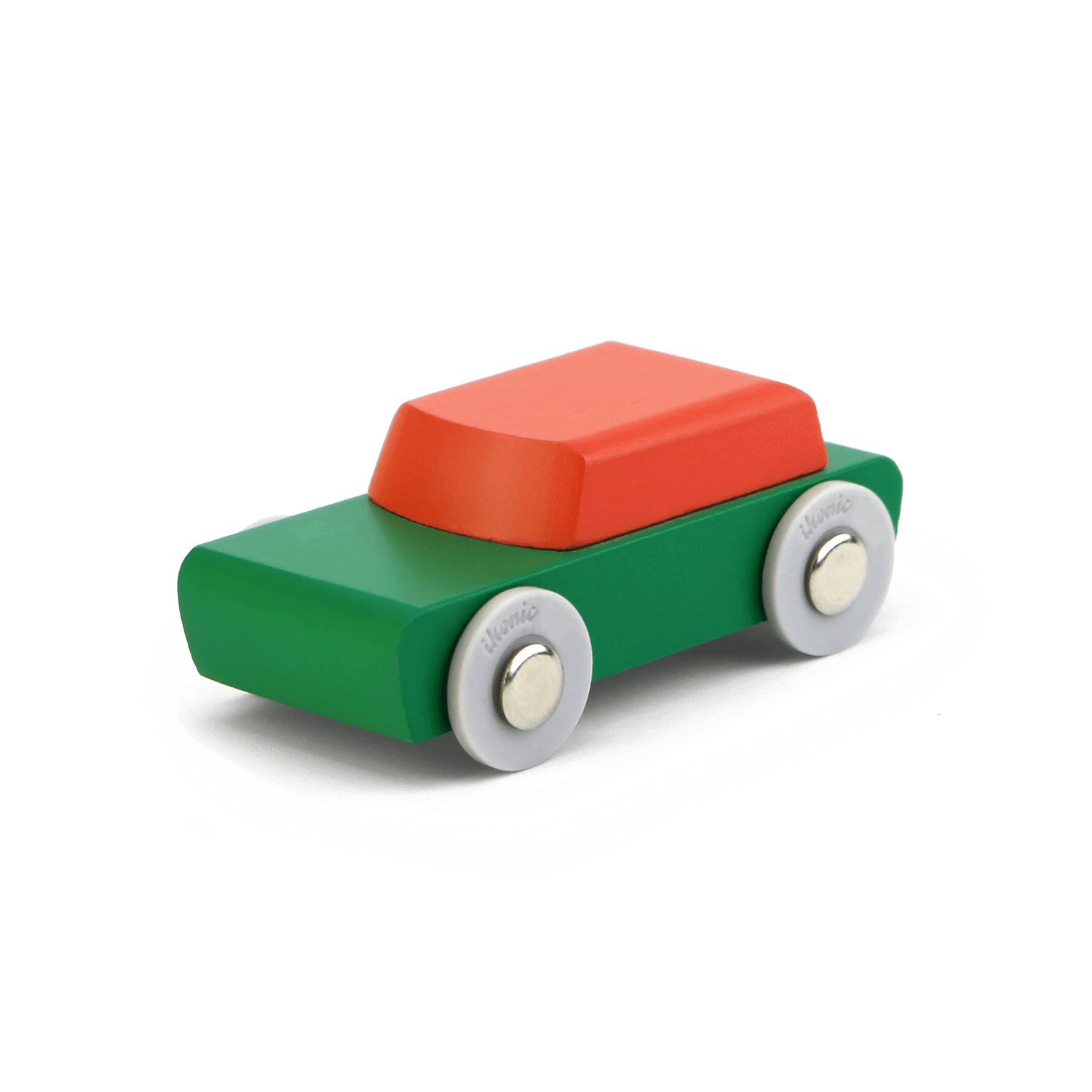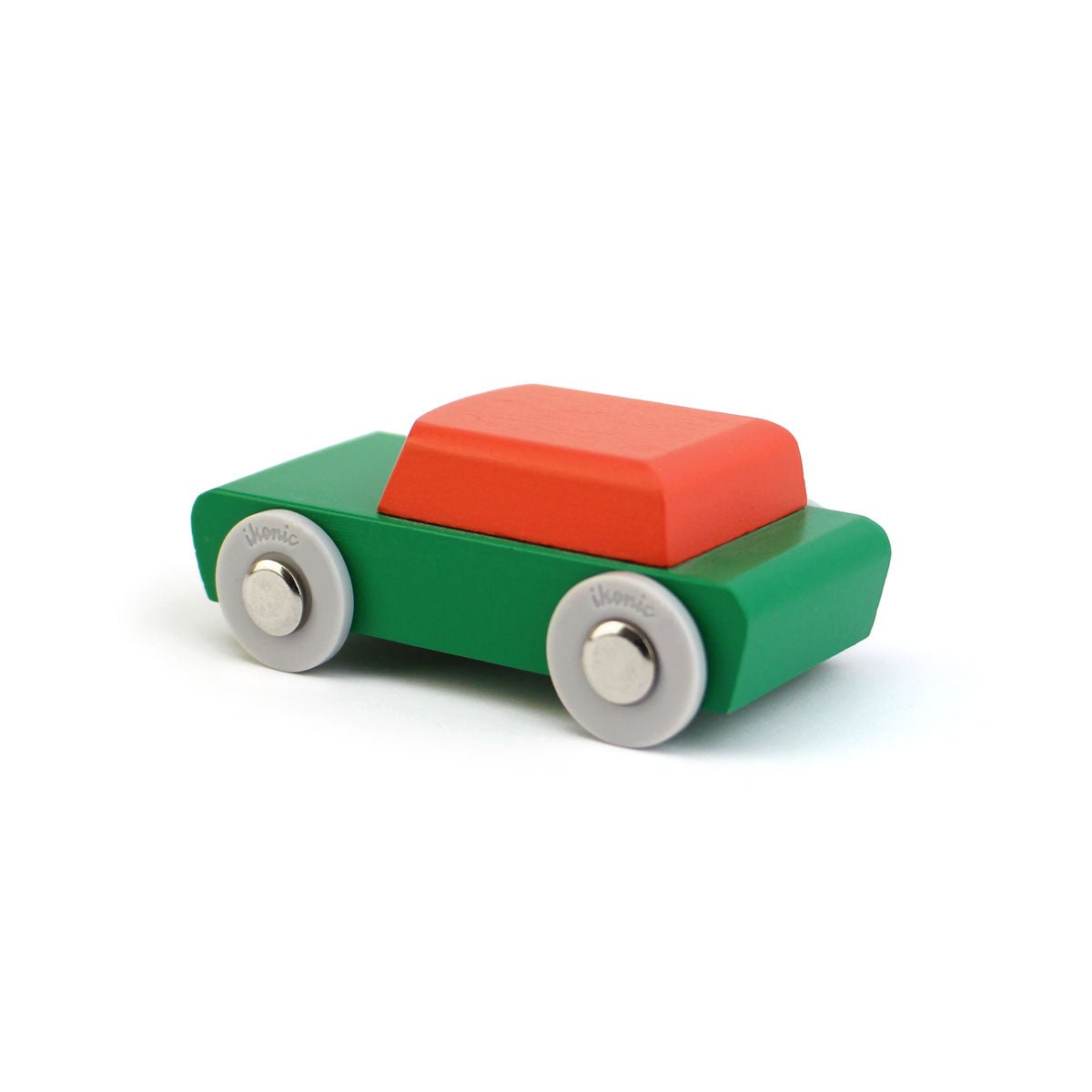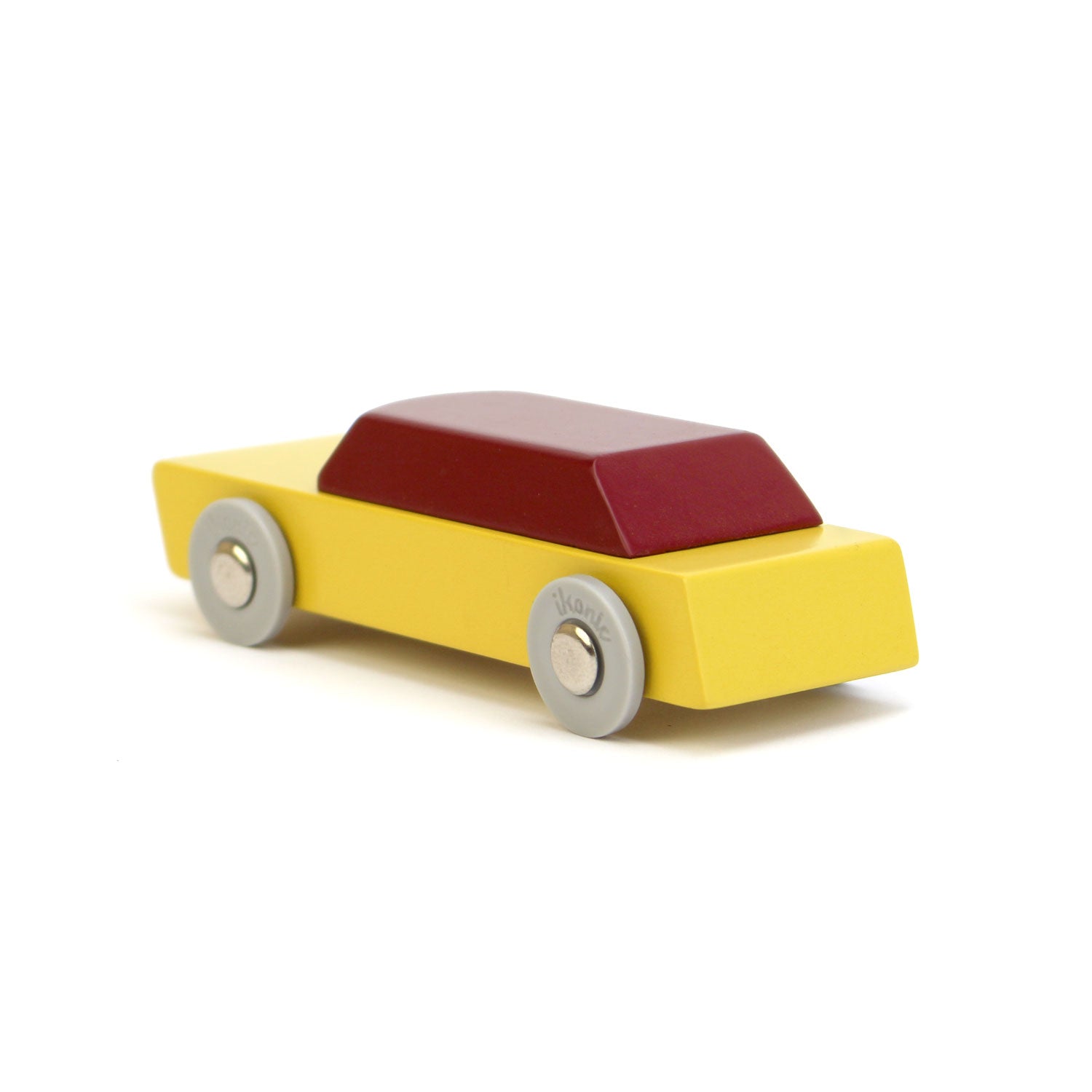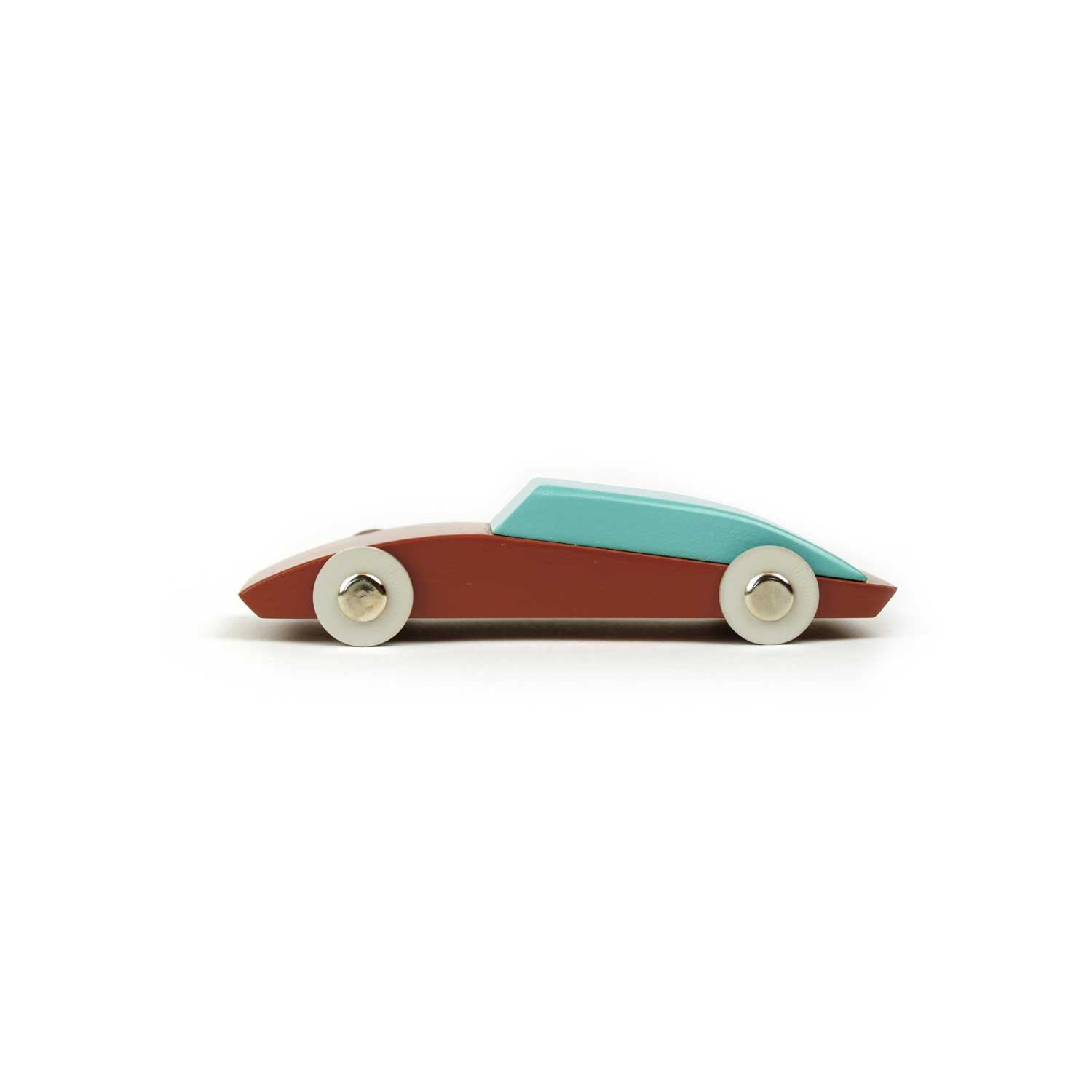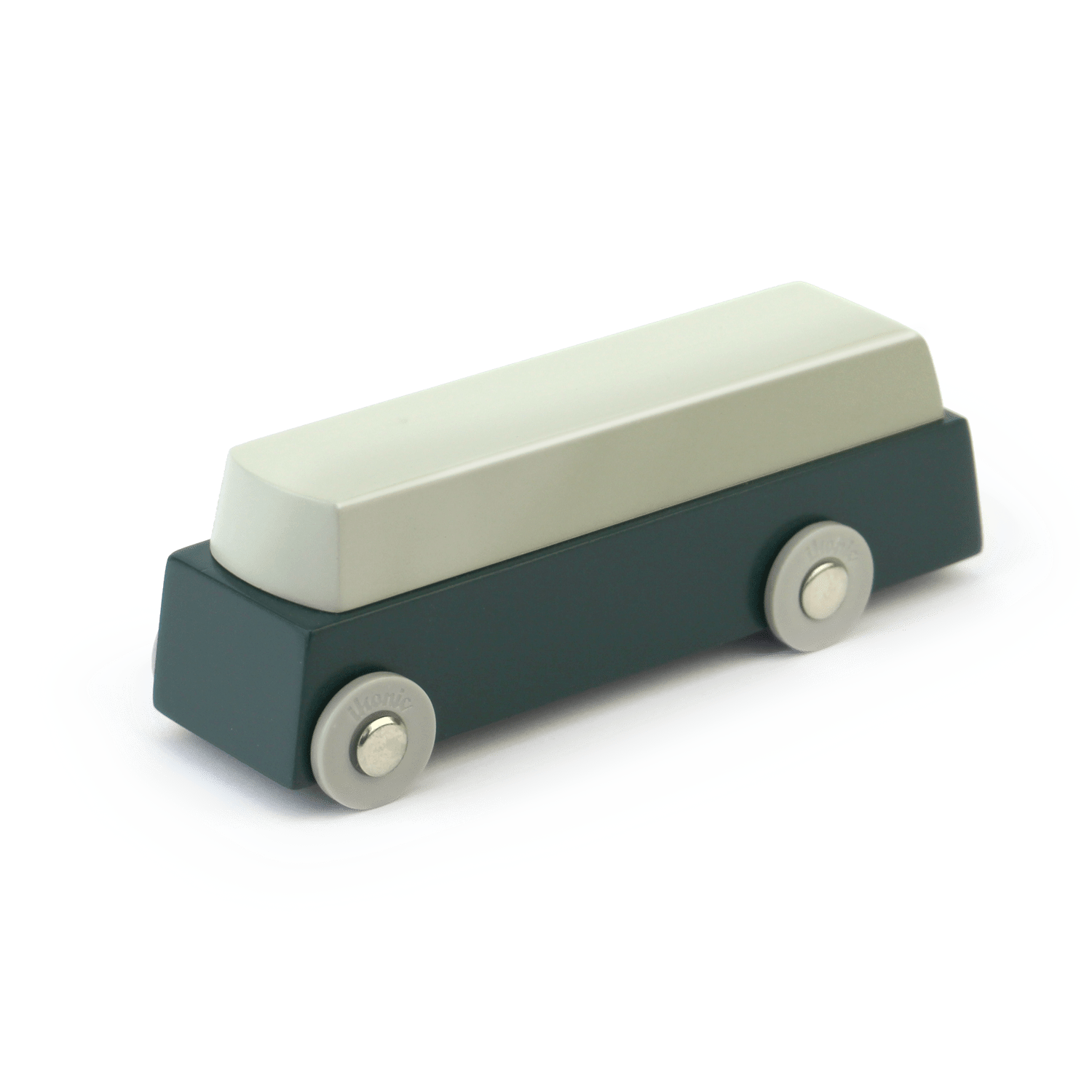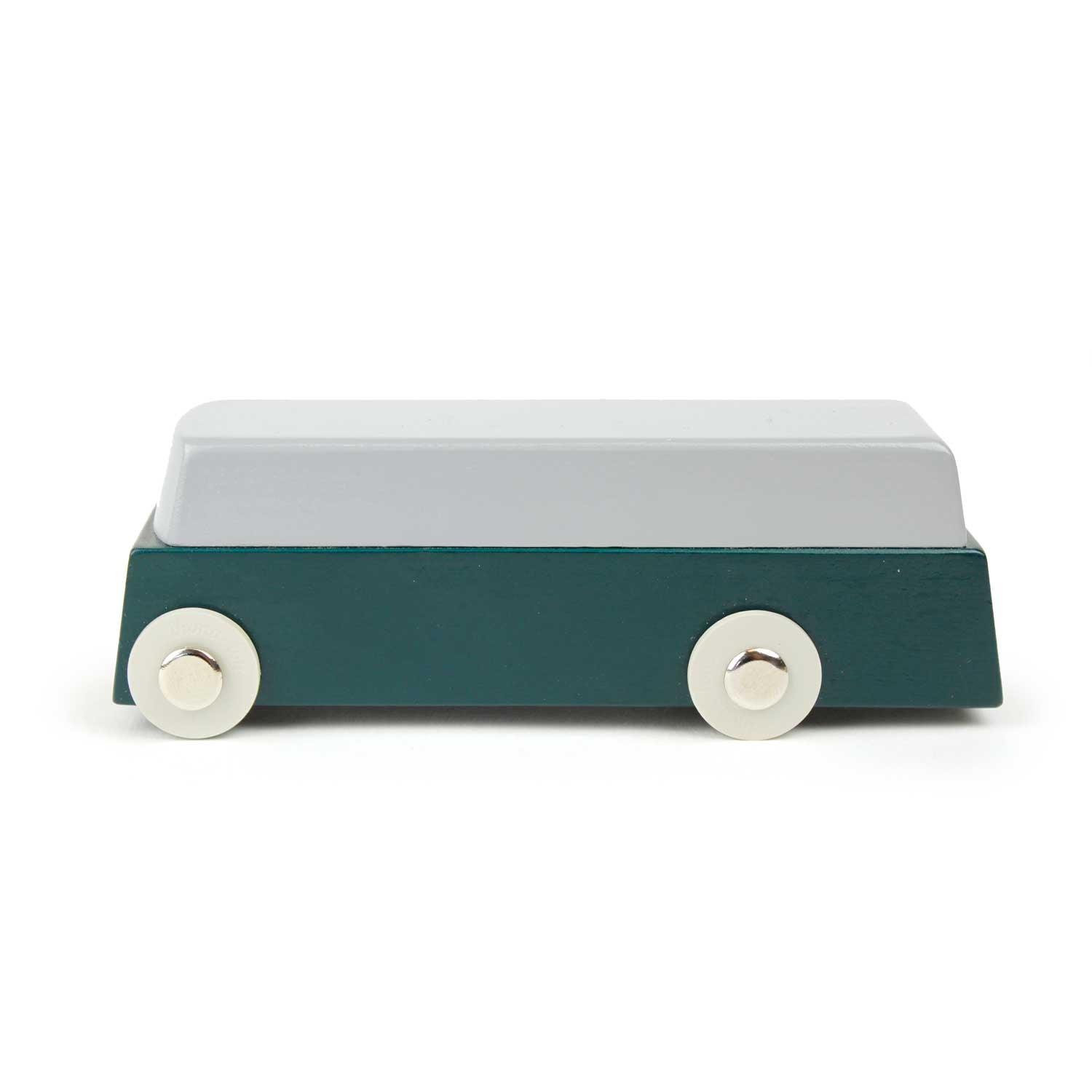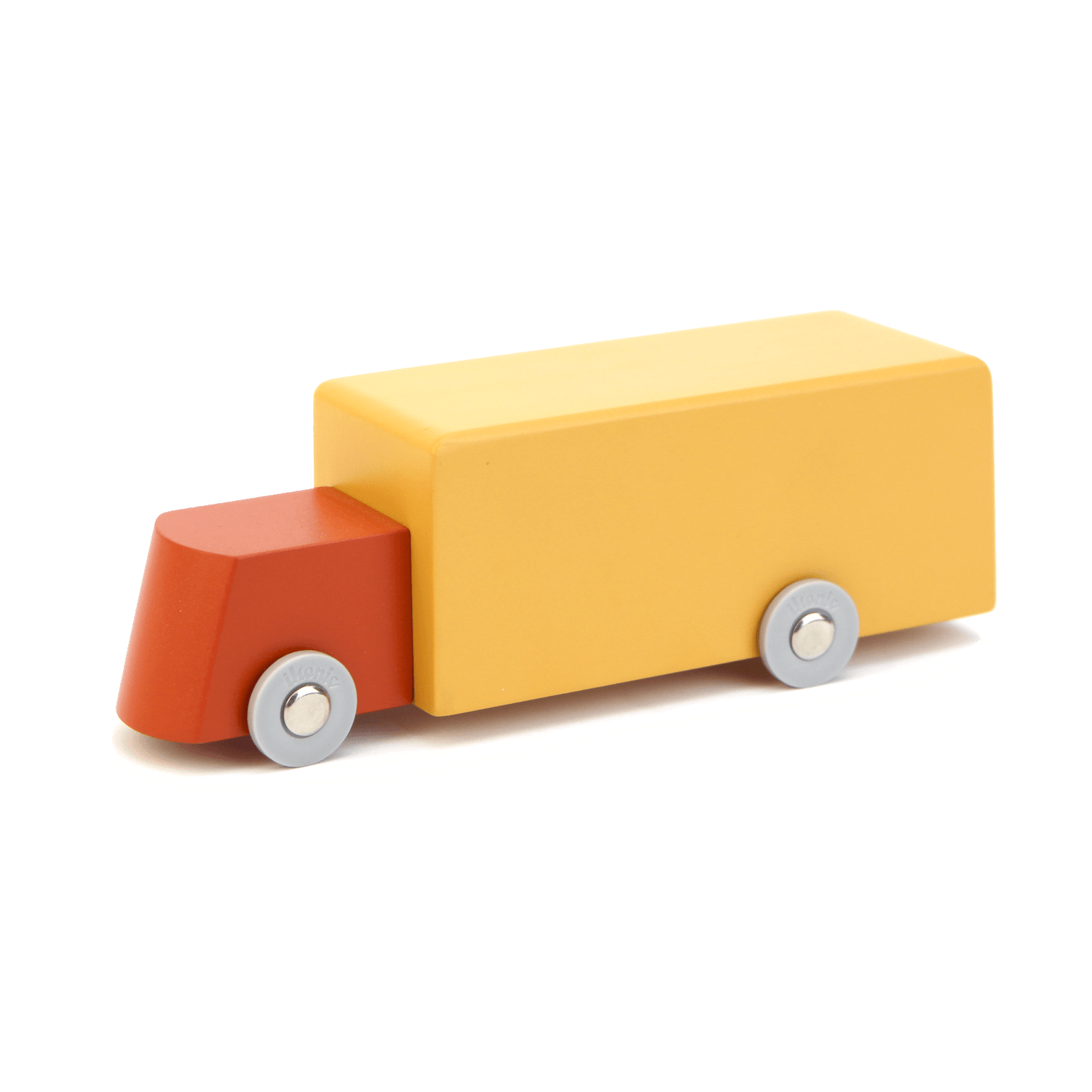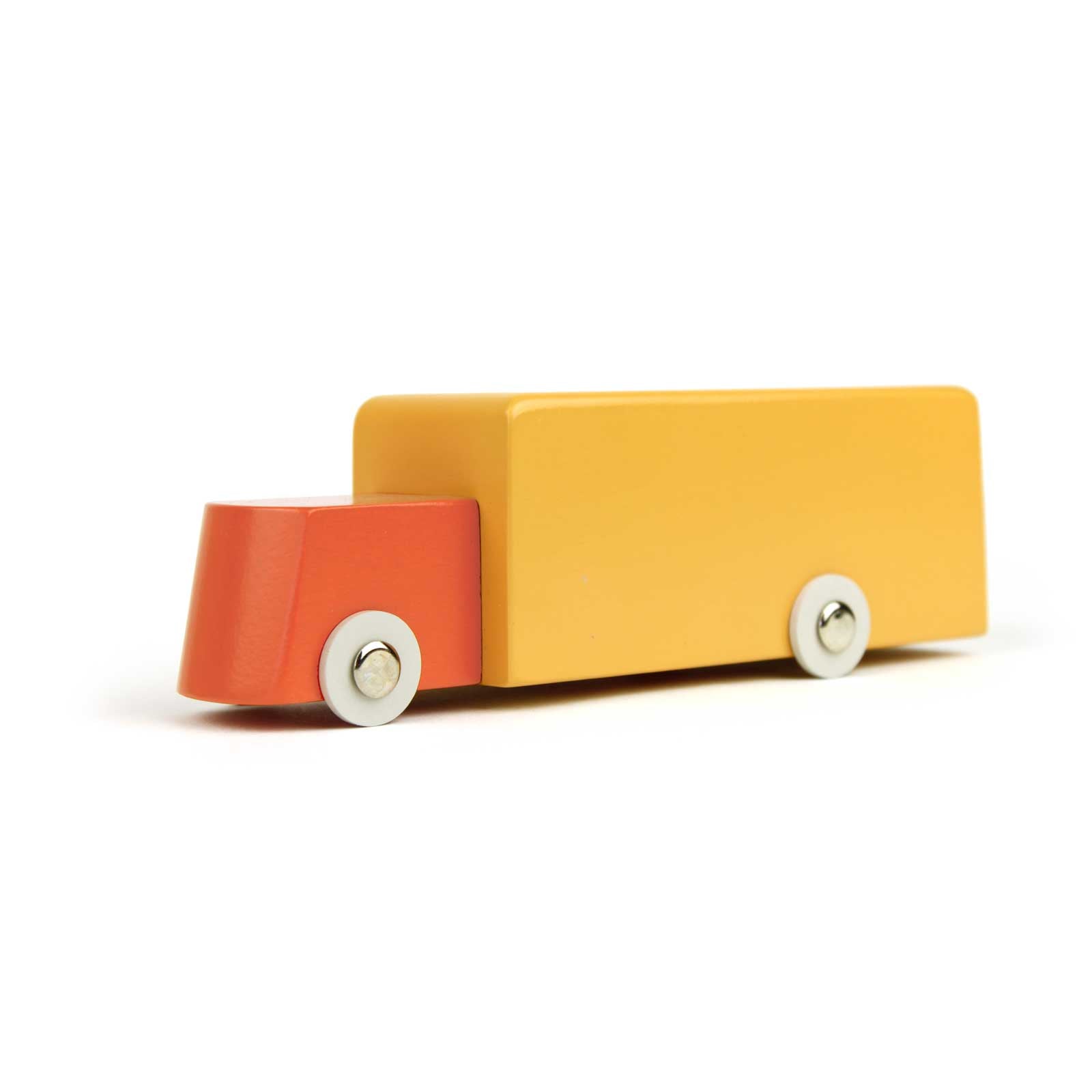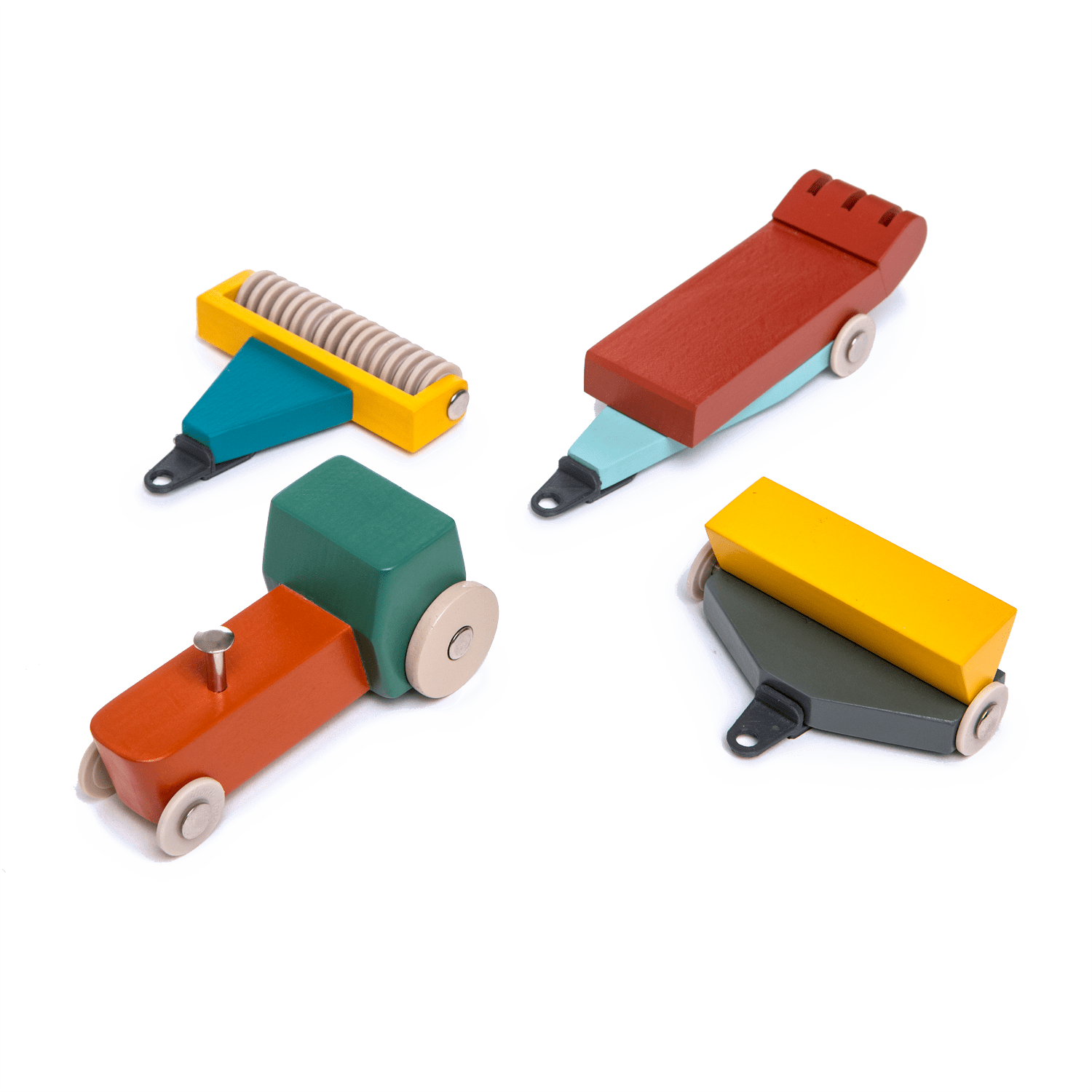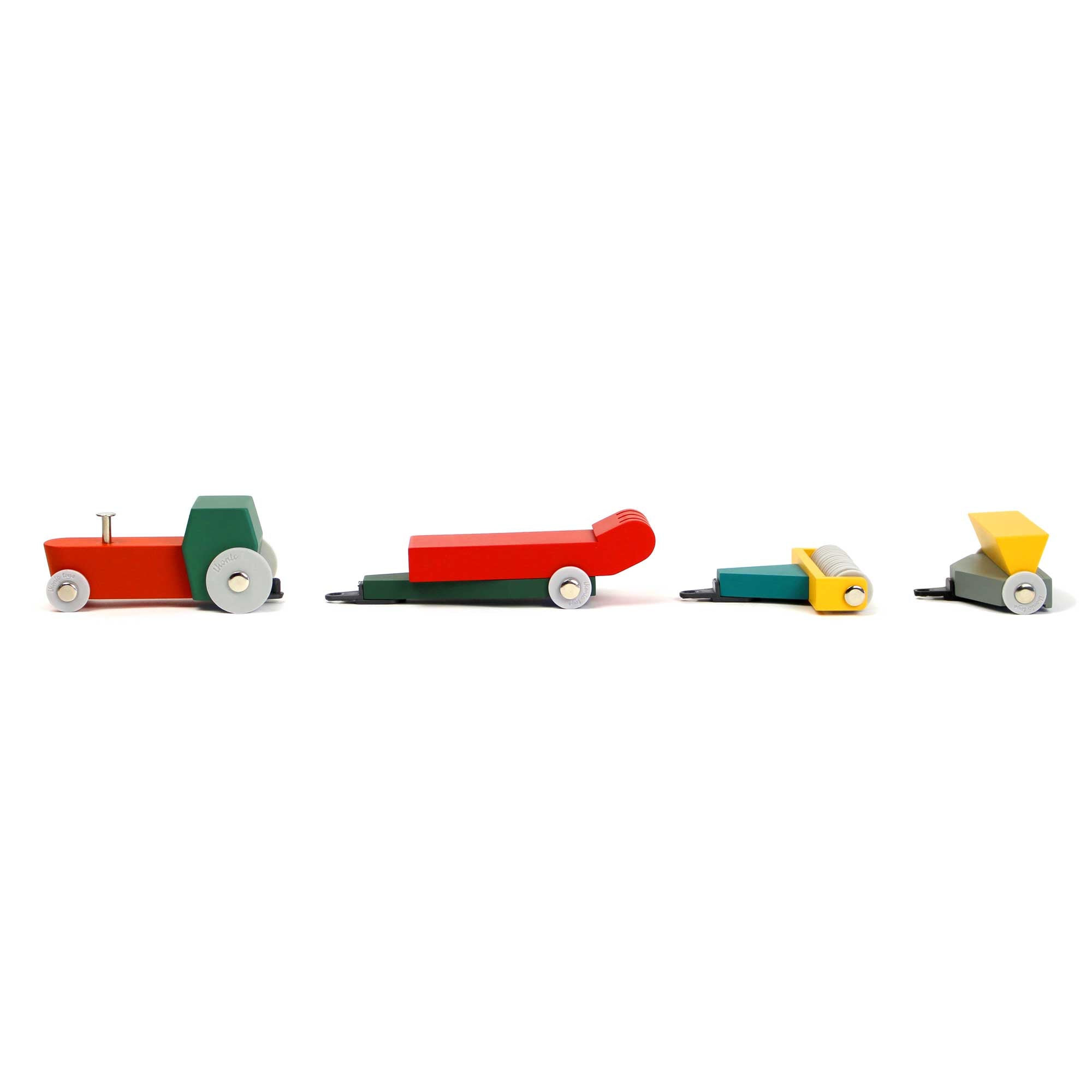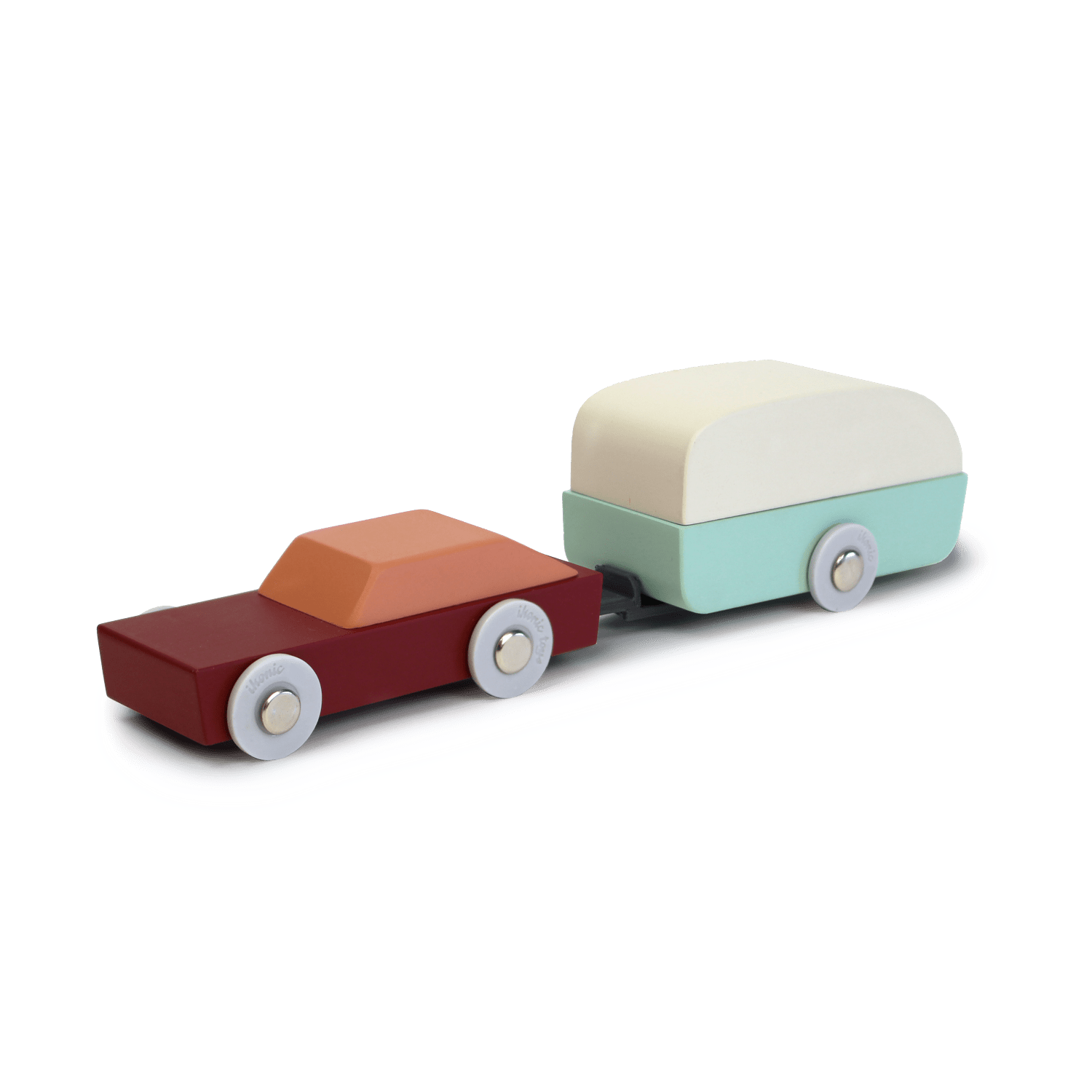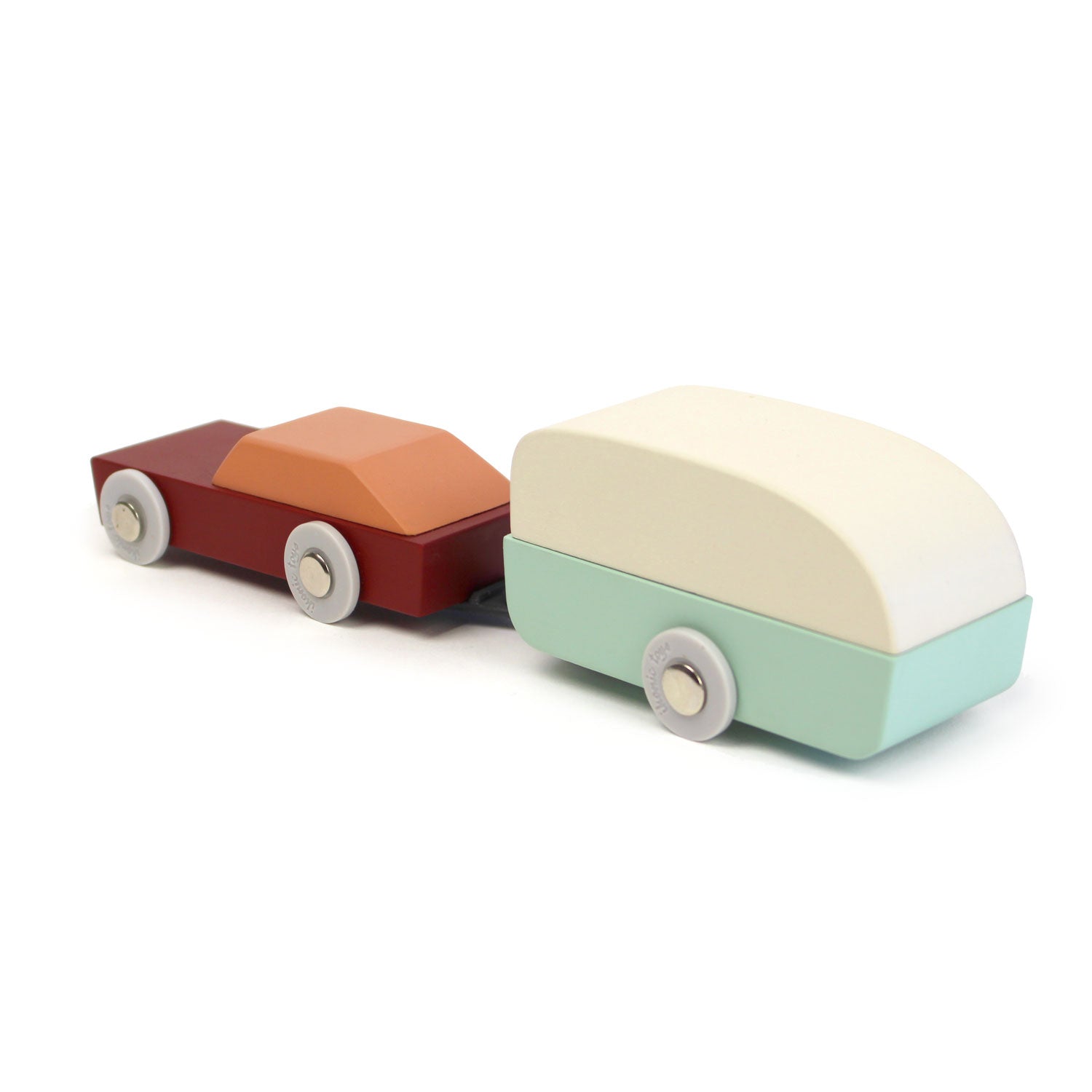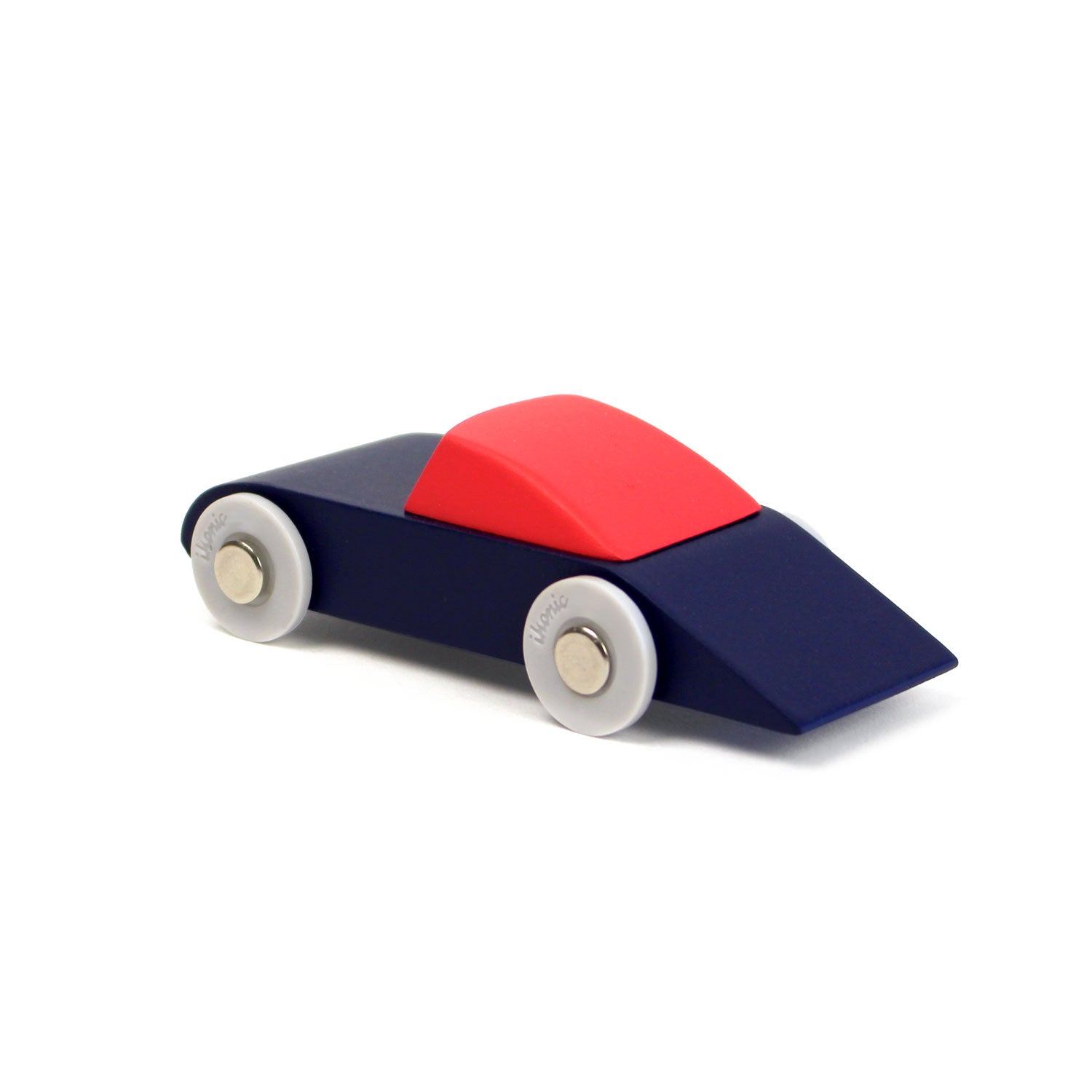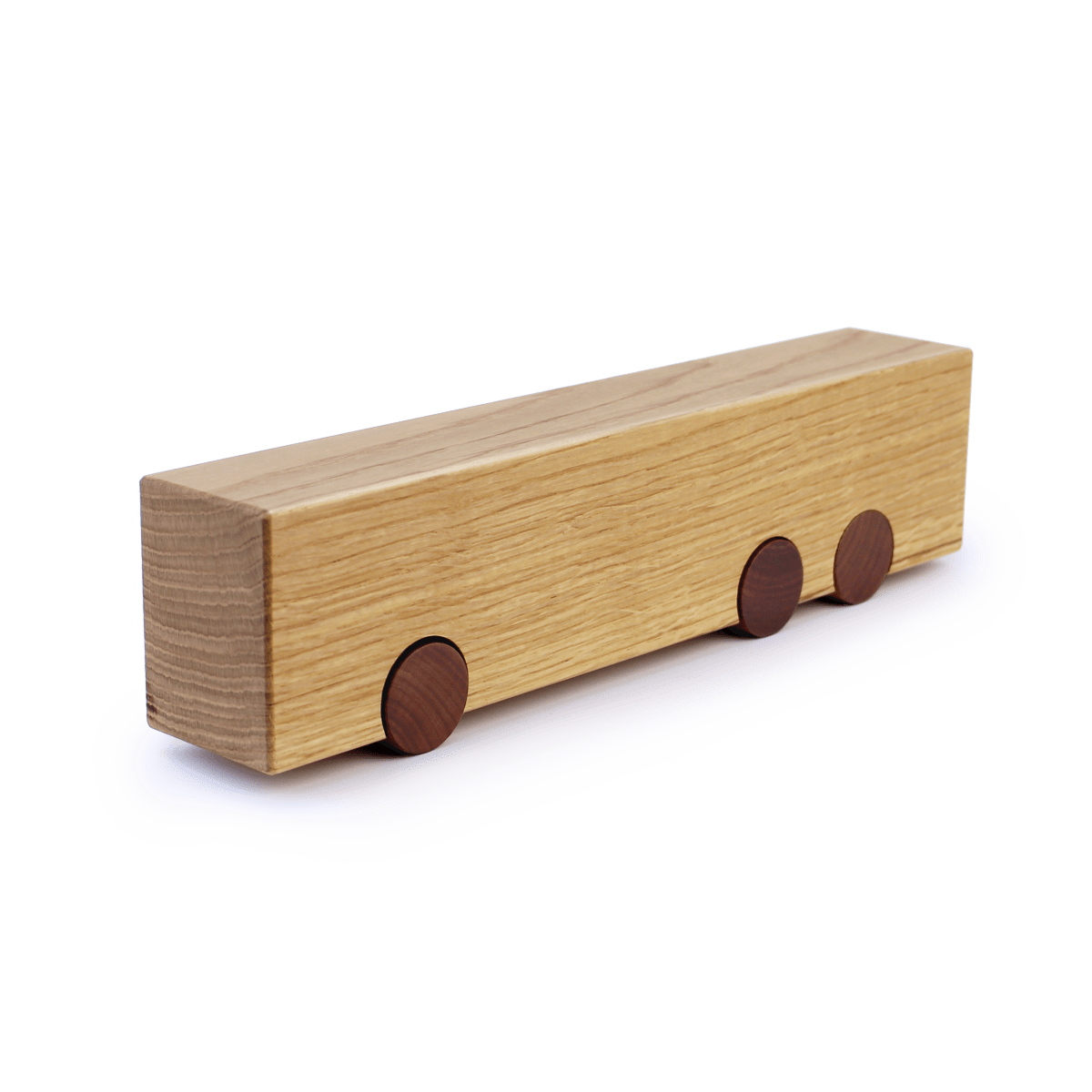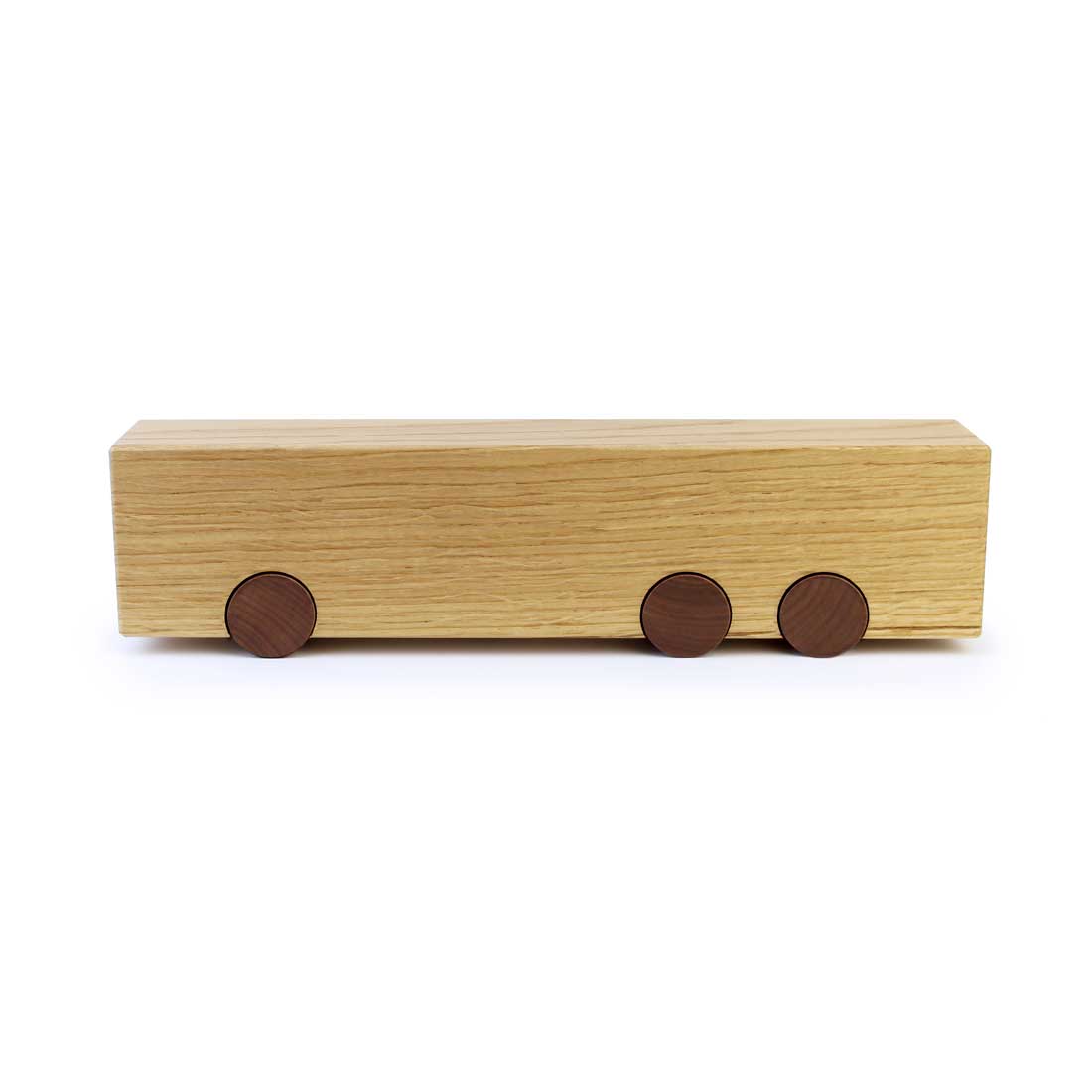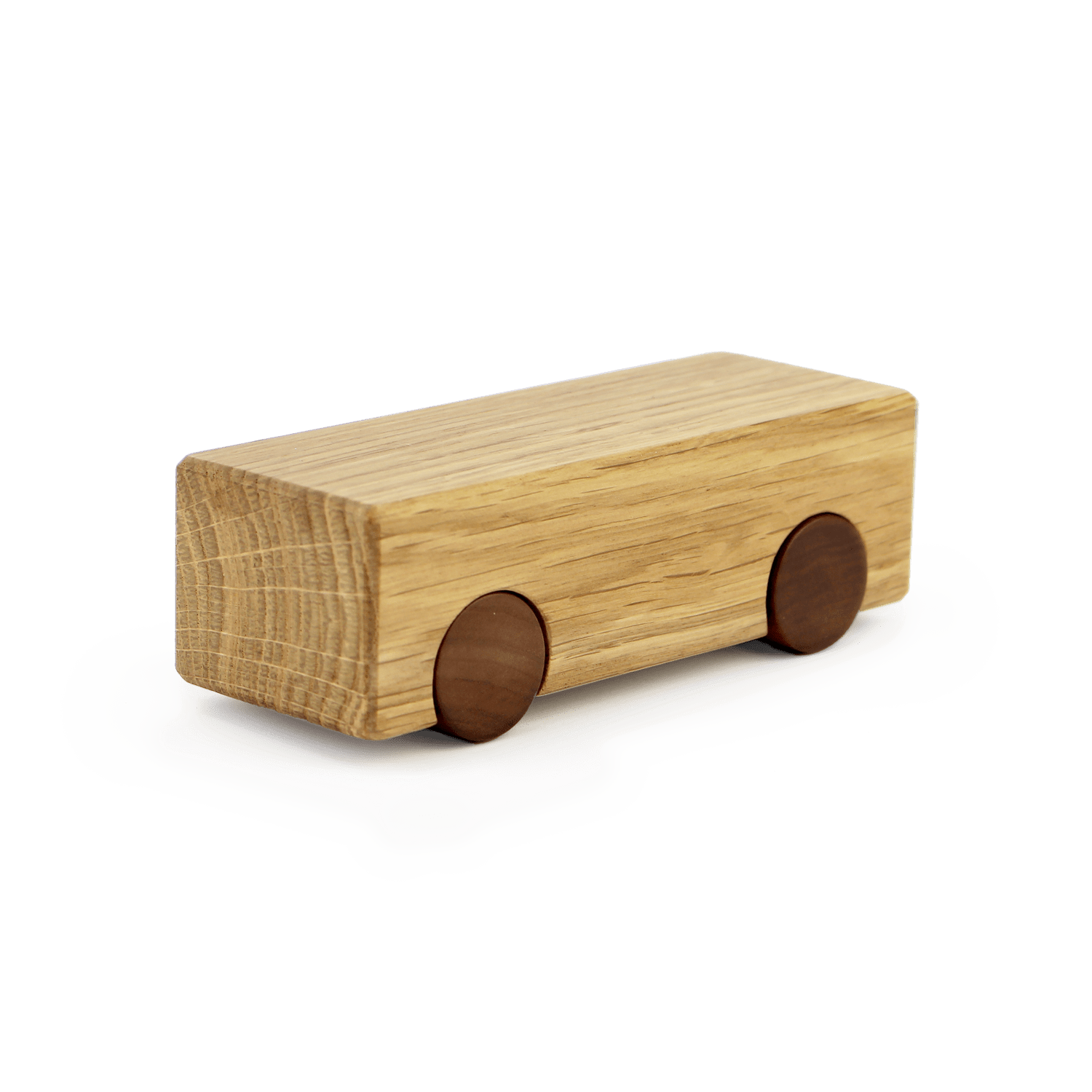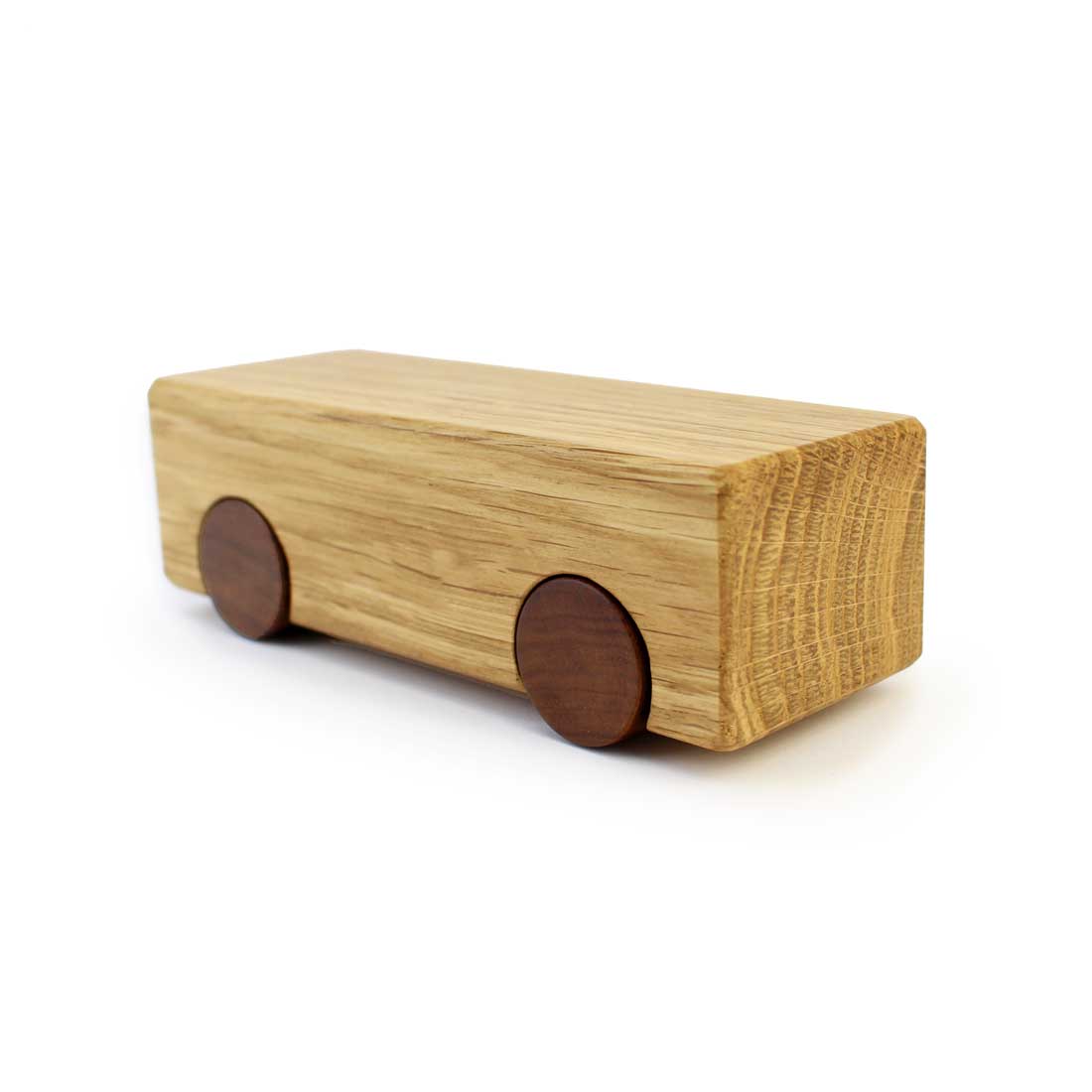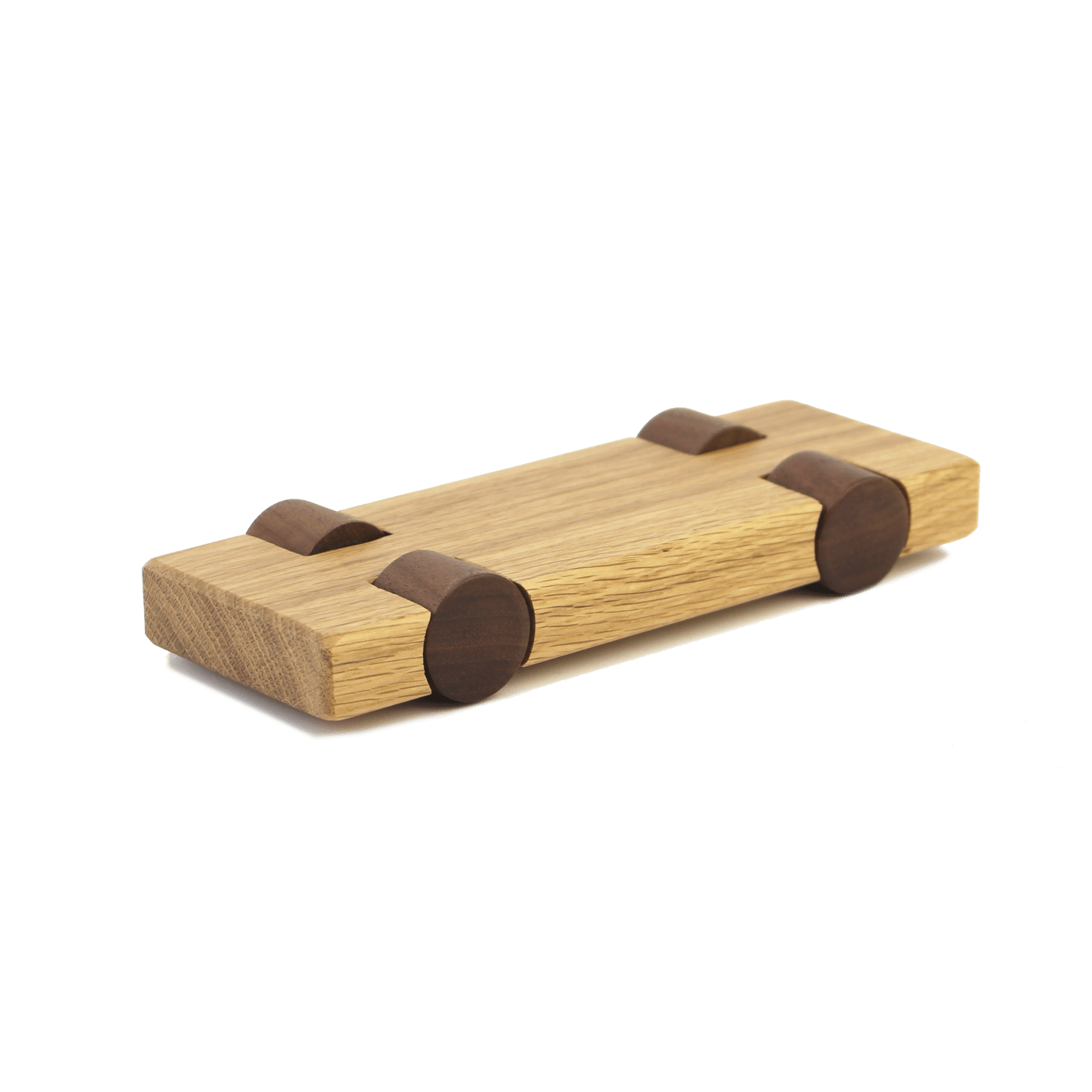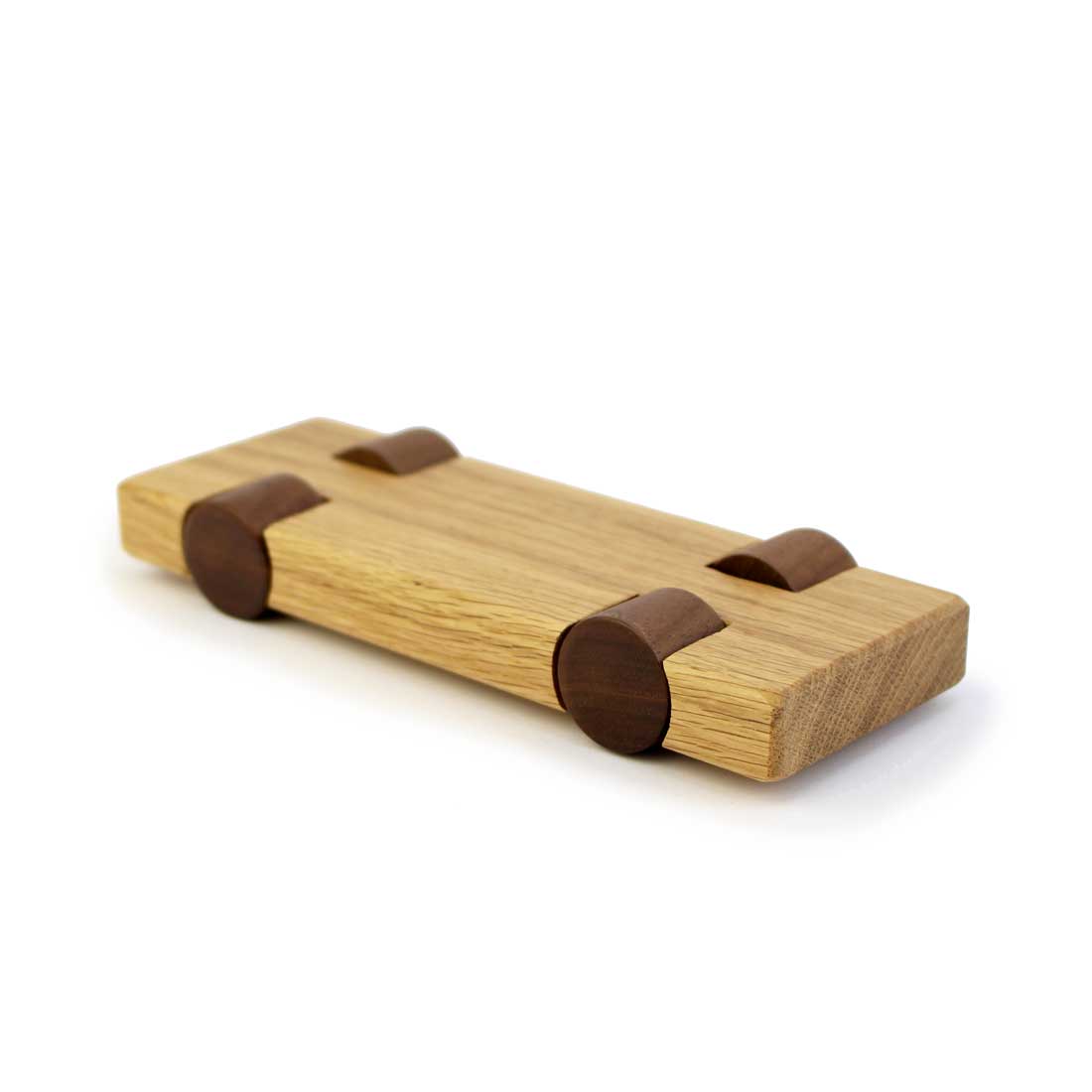
Wooden Cars
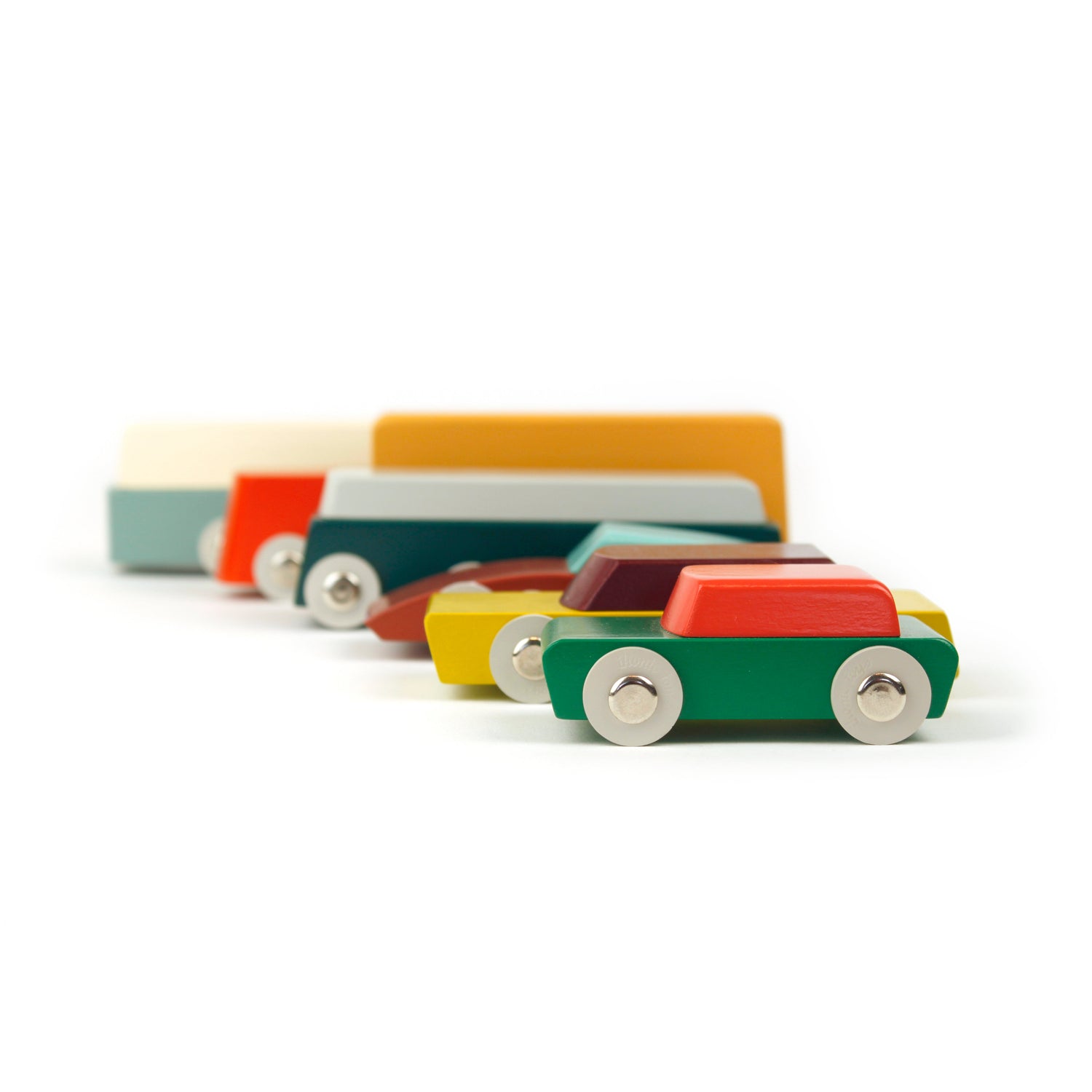
Wooden cars are a classic toy that has fascinated children (and their parents) for generations. At a time when plastic and electronic toys seem to have the upper hand, the simple wooden car is gaining popularity again. Not only because of nostalgia, but especially thanks to conscious choices around sustainability, safety and the development of young children. In this extensive article, we answer all the questions surrounding wooden cars, list the most important facts and figures, compare different materials, and show why a wooden car is an ideal gift ...... and how to make your own!
What makes a wooden car so special?
Wooden cars exude simplicity and robustness. The material feels natural, has a pleasant weight and is virtually indestructible. Where plastic cars are often broken after a few years, wooden cars can last for generations; Many adults still remember their own wooden toys as treasured possessions. This makes each car unique and suitable as a special gift. In addition, wooden cars are generally free of digital and/or electronic bells and whistles. This stimulates the imagination: a wooden car is just as easily a fire truck as a taxi or racing car, depending on the story the child comes up with.

Sustainability: Why wooden cars are better for the planet
Sustainability is without a doubt one of the biggest reasons why wooden cars are so popular. Wood is a renewable resource, which (provided it comes from certified forests; think FSC quality mark) – hardly contributes to deforestation or depletion of the earth. The production of wooden cars causes much less CO₂ emissions than plastic and metal. Moreover, the final product is usually biodegradable, and even after years it does not contribute to the growing mountain of waste. Figures show that a wooden car lasts up to four to ten times longer than a plastic model. Moreover, old toys are often passed on or repaired instead of thrown away, as is often the case with plastic and electronic toys.
The advantages of wooden cars over plastic toys
Below is an overview of the advantages of wooden cars as an alternative to plastic and metal cars:
- Safety: wooden cars (made of solid, unvarnished wood) do not contain harmful substances such as phthalates (plasticizers), cadmium, lead, or BPAs (Bisphenol A, a chemical element) that are found in plastic.
- Sustainability: wood is a natural product and infinitely renewable in responsible forestry. Wooden toys often last (much) longer than plastic variants.
- Environmental friendliness: the production of wooden toys produces much less CO₂ emissions than plastic and metal production. Moreover, wood is completely biodegradable.
- Timeless and durable design: wooden cars are often robust, can take a beating and look stylish in any interior.
- Stimulation of imagination and creativity: because wooden cars are simply designed and have few fixed functions, they stimulate the imagination of children much more than toys with fixed, electronic functions.
- Positive impact on development: The heavier weight, texture and simplicity contribute to sensory integration, tactility (how something feels), eye-hand coordination and fine motor skills.
- Little stimuli/stimulation: wooden cars have no loud noises or bright colors; They meet the needs of children who are sensitive to many stimuli.

Are wooden cars safe for young children?
Yes, provided they are well produced! Solid wood toys are almost always safe, but pay attention to painted or glued toys and toys that contain magnets:
- Choose cars without sharp edges or loose small parts.
- Avoid toys made of plywood or with unknown adhesives (e.g. adhesives containing formaldehyde). Most European brands meet strict requirements and controls in terms of finish and toxic substances (CE, REACH).
- Avoid wooden cars with magnets when the child is still small (under 3 years old). Magnets are very dangerous if swallowed!
- Preferably buy wooden cars from certified suppliers.
Are wooden cars suitable as a gift for a toddler?
Absolutely! Wooden cars are often sold as a baby shower gift, first birthday gift or gift for a toddler. A few reasons why they are perfect:
- Safe format; specially designed for little hands
- No sharp points or small parts
- Encourages role-play, imagination and motor skills
- Durable and virtually unbreakable, the toy will last for generations. Wooden cars are therefore a unique reminder of toddlerhood.

Why do many people choose wooden cars instead of metal models?
In addition to the already mentioned advantages of wood over plastic, there are also clear differences with metal models:
- Safety: Metal cars can (especially with intensive use) give sharp edges, bend or contain small screws; Wood has rounded shapes with no risk of injury.
- Solidity: wood does not rust or dent, metal cars wear out faster due to rust or bend with intensive use.
- Sustainable: metal production is very harmful to the environment; Wood is more recyclable and requires less energy in production.
- Timelessness: wooden cars often look attractive to adults and fit into any modern interior and in the children's play corner.
Trends: Wooden cars for the new sustainable generation
The trend towards sustainability in parenting and toys has been clearly visible in recent years. Data from toy stores shows that sales of wooden toys in the Netherlands and Europe are growing at a rate of 10-15% per year. More and more young parents are consciously not choosing plastic toys because of the environmental impact, but are looking for alternatives such as a wooden car. This is in line with other trends, such as multifunctional toys and the possibility to rent wooden toys, so that they can be used even longer by new families. Wooden cars fit perfectly into this movement towards more sustainable, conscious use of toy goods.
Multifunctionality and open-ended play: Why wooden cars are so good for development
Wooden cars often fall under the so-called 'open-ended toys': toys without a fixed game purpose with more than one way to play with them. Kids can let their imagination run wild, drive the wooden cars, collide, race, make up stories, or take them out in the mud. This way of playing stimulates problem-solving skills, creativity, planning and cooperation. Unlike electronic toys, where often only one outcome is possible, wooden toys offer endless possibilities. Multifunctionality is also a plus: perhaps the car functions as a train, as a cart for a doll or even as a bridge for blocks.
Practical tips: How do you choose the best wooden car?
When purchasing, look at the type of wood (preferably FSC or PEFC certified), the finish (smooth edges, child-friendly paint, no splinters), and the possibility of personalization. Also, pay attention to the recommended age; Toddlers benefit from larger models without small or loose parts, if the cars contain small parts (or small parts that can come loose) they are only suitable for children over 3 years old. Check reviews from other parents and check whether the brand meets European safety standards (CE mark).
How do I make my own wooden car? Here's how to do it:
Making your own wooden car is a popular DIY project, also for parents, grandparents and schools. A short step-by-step plan:
- Choose a suitable type of wood, such as beech, maple or birch: these are hard and splinter little.
- Sketch a simple design on paper and trace it onto the wood.
- Saw it out coarsely with a (jigsaw) and carefully sand all edges smooth.
- Drill holes for the shafts (usually wooden pins or metal rods).
- You make wheels yourself or buy them in the hobby shop. Tip: use old draughts discs.
- Round corners well for safety and comfort.
- Give the car color: use child-resistant, water-based paint, linseed oil or beeswax. You can find countless sources of inspiration and instructional videos online, and some toy stores offer construction kits or even workshops for making wooden cars.
Frequently asked questions about wooden cars
- Are wooden cars more environmentally friendly? Yes, provided it is made from sustainably sourced wood and without toxic substances or lacquers.
- Do wooden cars need extra maintenance? Usually cleaning with a damp cloth is sufficient. Avoid harsh cleaning agents.
- Are there any wooden toys with moving parts? Sure, there are wooden trucks, fire trucks, cranes, and vans – often with swivel wheels, tailgates, and more.
- Are wooden cars suitable for younger children? Yes, provided that the toy meets safety standards and has no small parts.
Facts and figures: The impact of wooden cars
Research (Almroth et al. 2022) shows that more than 80% of the plastic toys tested contain potentially toxic substances, while wooden toys score significantly safer on hazardous substances.
The lifespan of wooden toys is on average four to ten times longer than that of plastic alternatives.
Sales of wooden toys are growing annually by 10-15% in the Netherlands and surrounding countries. For many families, the wooden car is a conscious choice, which is in line with sustainable parenting and responsible use of materials.
Wooden cars as a gift: the best choice?
Numerous reviews show that a wooden car made of wood is a hugely appreciated maternity or birthday gift. Due to the combination of safety, durability, and timeless appearance, wooden cars are suitable for almost any age, both boys and girls. In addition, more and more specially designed wooden cars are coming onto the market that are also popular with adults. It fits into a conscious, sustainable lifestyle, which more and more parents and grandparents value.

Wooden cars are regaining their place in modern families, not only because of their nostalgic value, but especially because of their durability, reliability, safety and positive influence on the development of the child. As a gift, as a collector's item or for personal use: investing in a wooden car means choosing quality, creativity and environmental awareness. By paying attention to quality marks and materials, you can be sure that your child can play safely and with pleasure for years to come. Making your own wooden car is also a fun, educational experience! In short: the wooden car is the sustainable playmate for the new generation.






